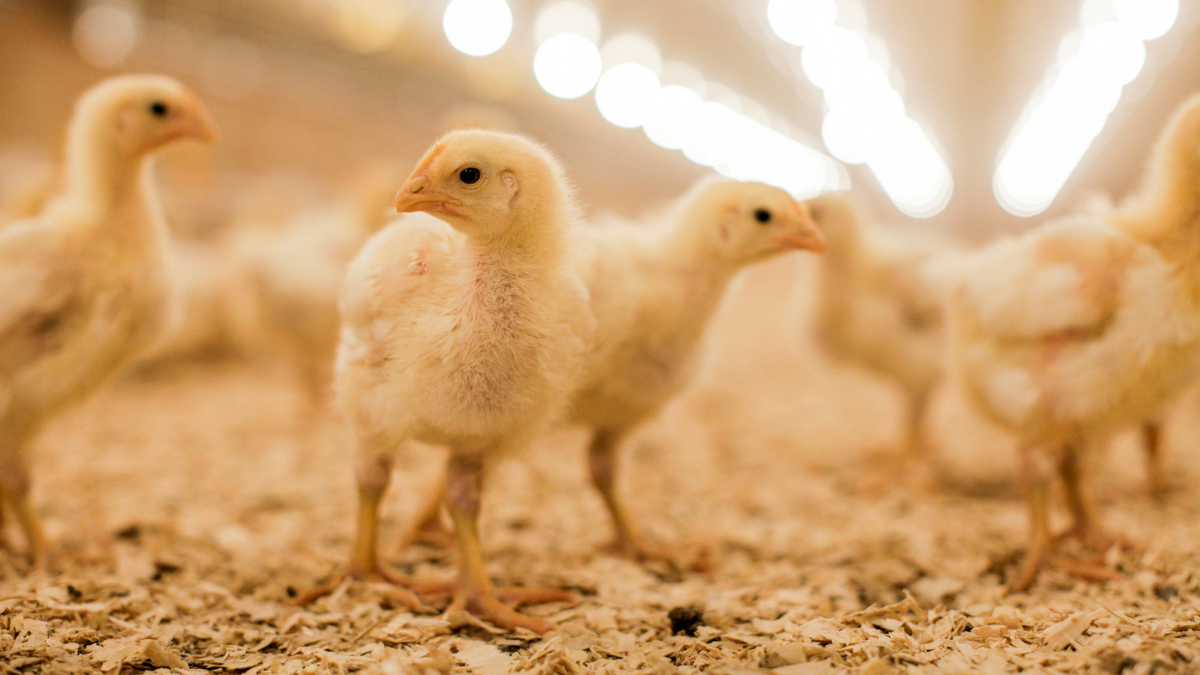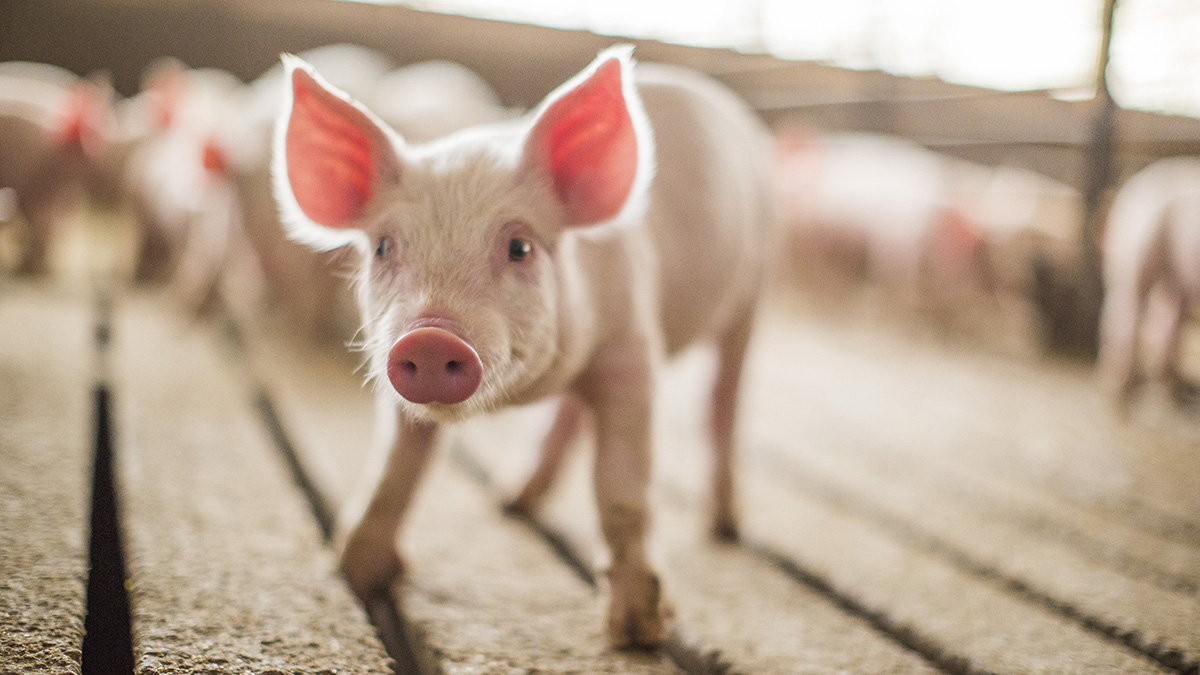The following is an edited transcript of Tom Martin's interview with Dr. Anna Catharina Berge, veterinarian and owner of Berge Veterinary Consulting. Click below to hear the full interview:
Dr. Anna Catharina Berge, owner of Berge Veterinary Consulting BVBA, is a veterinarian with extensive knowledge and skills combining real-life animal husbandry with epidemiological perspectives of animal and public health challenges. Berge joins Tom Martin from Vosselaar, Belgium, to discuss the use of, and alternatives to, antibiotics in pig production.
Tom: Let’s begin with pig production. Is antimicrobial use in pig production a real threat?
Catharina: All antimicrobial use has the potential to increase antimicrobial resistance in bacteria. Antimicrobials are really vital to humans and animals to protect against bacteria that can cause disease or death. Antimicrobial resistance is threatening the efficacy of these valuable drugs to treat bacterial disease. Even the World Health Organization (WHO) stated in 2014 that the antimicrobial resistance situation is so serious that we are entering a post-antibiotic era in which common infections and minor injuries can kill. This is far from being an apocalyptic fantasy — it’s a very real possibility for the 21st century. This is not just some journalists writing up some fearful scenario. This was the WHO. So, it is a real threat.
Microbial resistance in pig production is usually a consequence of decades of antibiotic use for disease prophylaxis or growth promotion. The antibiotics administered are not completely absorbed by the animals. If you’re giving an antibiotic to an animal, 30 to 90 percent of those antibiotics are actually excreted through the urine or feces. The antibiotics can reach the source through medical waste, improper drugs or even from dust from pens in barns. These antibiotic residues can also impact the environment and disturb the delicate ecological balance.
Antibiotic-resistant bacteria may also spread into a virus through other mechanisms. Antibiotic-resistant bacteria may also spread to humans through food or through the environment. These antibiotic-resistant bacteria don't just disappear if we stop using antibiotics. They tend to linger. They’re easily created, but they don't tend to disappear quickly. Therefore, we need to do everything to not increase this pool of resistant disease that can spread between different types of bacteria. These resistant diseases can spread from bacteria that are not dangerous and just hanging around in our dust to those bacteria that are really causing disease and even death. If that resistant disease finds bacteria that cause death, then we have a bacterial disease that can’t be treated, and we may die from it. So, resistance is dangerous.
Antibiotic resistance is also an increasing challenge on many pig farms because producers are noticing that good old antibiotics are not working any longer because bacteria become resistant to them. So, they use newer and newer antibiotics. And this newer antibiotic is what the WHO now calls critical antibiotics, those that we want to maintain to treat humans against dangerous disease, so we’re building up resistance to all of these newer antibiotics. The problem is, there are really no new antibiotics created today. The pharmaceutical industry has stopped investing in the research and development of new antibiotic drugs, so we're running out of good drugs to treat bacteria.
Tom: You have noted that herd-level immunity, individual pig gut health, systemic immunity, nutritional status, stress levels, and environmental conditions all interact. Why is it important to understand these interactions?
Catharina: No animal, organ or cell works in isolation. They all work closely together and, hopefully, in harmony. They all influence each other. So, a pig, furthermore, is living within a very complex production system where you have various factors that can influence its health and productivity. So, unless you take the whole system into account and evaluate this whole system, you don't really know the cost of a disease or why the pig is not doing well. You may think the cause is something other than disease, but it’s really the disease as a consequence of the production system.
Our production systems have not been optimized for what the pig needs and what we want from the pig. We are trying to adapt the pig to our production systems instead of adapting our systems to the pig. This is creating a problem, and one of the solutions has been to medicate with antibiotics.
Tom: What challenges do antibiotics pose to the gut health of pigs and livestock?
Catharina: Antibiotics can prevent bacteria from reproducing or destroy bacteria. These antibiotics don't differentiate between bacteria that are good for the body and those that are potentially harmful. Some antibiotics work on different threats to the bacteria and some can work against a lot of bacteria types. Others work against just a few.
Many of these antibiotics are used in the feed in pig production for extended periods of time. They have what we call a broad spectrum. They work against a lot of different bacteria. An example of such is tetracycline. These antibiotics can modify the gut flora and reduce diversity of the bacteria in the gut. Therefore, many good bacteria that are helping in many different ways are killed. Some harmful bacterial also are killed, but when the good gut flora is destroyed, then the pathogenic, harmful bacteria have a bigger chance to reproduce and attack the intestinal lining, maybe even invade the body and cause disease. It’s really essential to create a good microbial flora in the pig, and these antibiotics can actually work against them in that way.
Tom: Globally, farmers are now showing that it is possible to reduce antimicrobial use without sacrificing performance in health. A key focus has been placed on gut health. Why is gut and intestinal health in pigs so important?
Catharina: It’s key to a healthy animal. The gut is responsible for the digestion and absorption of nutrients that are necessary for the whole body to function properly. Through the food ingested, the pig gets energy — macronutrients and micronutrients — to fuel and support the functions of every single cell in the body. So, if the gut is not working, then the pig’s overall health will suffer.
It’s in the gut that the immune system encounters many potential pathogens that are harmful bacteria. These need to be stopped before they start destroying the intestinal linings or invade the body. In the gut, we have the most immune cells of the whole body. This immunity has high requirements for energy and nutrients and must be in top shape for protecting the pig. If you don't have good gut health, then the immune system doesn't have enough energy to do good work.
A healthy gut, furthermore, has a microflora of bacteria that participates in the digestion of many nutrients. These healthy gut microflora also prevent pathogens from growing and invading intestinal cells. This microflora shows a high level of diversity, and every bacteria species influence each other. So, the healthy gut microflora is also critical to a healthy gut.
Tom: What do you think will be the best measures to reduce antibiotic use?
Catharina: I like the holistic approach. The best measure to decrease antibiotic use is to optimize the production system and nutrition to better meet the pig’s basic needs.
A first step is to create awareness of the consequences of our antibiotic medicating system and motivate people to change. It’s important for producers to understand that reductions in antibiotic use can be made without compromising the health of the animal or their productivity. But it requires an evaluation of the whole production system and nutrition to identify the weaknesses in every single system because every single system we enter is different.
The easiest part to change is nutrition for the pig and making sure that it’s correct for every single stage of its life and that the pig is not exposed to high levels of bacteria or mycotoxins in the feed and the water. Thereafter, we are starting to look at management changes and housing changes to meet the physiological needs of the animals and protect them from disease from inside and outside the unit. That’s also called “biosecurity,” and that's very important. Thereafter, we need to start looking at how we can boost immunity so that the pig is then able to meet all the challenges.
Tom: Among the farms you are working with, what percentage of reduction do you think is realistically achievable?
Catharina: I would say most farmers across the world are still using a lot of antibiotics prophylactically to prevent disease, or they use it for growth promotion. And I believe that all of that use can stop. There, again, there has to be a motivation of the producer to change. But, in general, if we go onto a farm, a realistic goal we usually can see without too much of a challenge is a 50 percent reduction in antimicrobial use already within the first year.
Tom: What are the components that should be included in any antibiotic reduction program?
Catharina: There was a philosopher in 1850 that said if you don't record it, you can’t improve it. So, you have to have an antibiotic use registration system and you have to evaluate it. It’s not enough just to jot down a few notes in a book somewhere. You have to evaluate. Then you have to set targets. You have to ask, “How can I achieve this reduction with those targets?” You need to look at the appropriate nutrition for every single stage of production. All the pigs, based upon where they are and how old they are, have different needs. You need to have appropriate nutrition. You also have to have very good, quality feeds — low microbial levels and low mycotoxin levels. Then you need to look at the management level. How are you moving the pigs around the system? Are you weaning them too young? Are you stressing them at different phases by mixing litters, and so on? So, management systems are very important.
Housing systems need to be evaluated. Many times, we have pigs in old systems where it’s really not optimized for holding them, and we may need to consider rebuilding on a long-term scale.
A very important part is biosecurity. Biosecurity is what we call “disease protection.” You need to protect the animals from disease that is found inside the uterus. That’s called “internal biosecurity.” You also need to protect the pigs from diseases that are not on the farm currently, but could be introduced by animals, vehicles and people. That’s called “external biosecurity,” and that's very important.
You also need to be able to correctly diagnose and treat the clinical diseases in the best way. People don’t always understand what they're seeing and how it should be best treated.
And of course, we have the alternatives to antibiotics that are valuable tools to support health and productivity. We have products that can support microflora in the gut and optimize the strength of the gut lining such as Bio-Mos® and Actigen®.
We have alternatives to boost immunity. Vaccines, for example, are vital to protect the pigs against many diseases. Organic minerals are important to boost the immune system and help the immune system work optimally. So, all of those components are appropriate and are very important to consider in a program.
Tom: You have suggested that the goal to reduce antibiotic use should be rephrased to a goal to produce healthy production systems. How do producers look at this challenge as an opportunity instead of a threat?
Catharina: Well, I think for that exact reason: Health is not a threat. It’s something we all strive for, whether in our bodies, a healthy business, healthy ecosystem or healthy planet. And producers are realizing more and more that diseases are costly. Furthermore, there is no joy in working with sick animals. Honestly, I have yet to meet a pig producer that tells me that he or she wants to use antibiotics. It’s rather that they believe it's necessary to prevent disease. When we start showing that we can remove the antibiotics without suffering productivity losses or increased diseases, then they start seeing the possibility of moving toward a more sustainable production.
Tom: Can you expand on the practical measures a pig operation could implement to develop a healthy production system?
Catharina: I would recommend any pig producer that wants to develop a healthy production system seek out a team of experts: consultants, nutritionists and veterinarians who can evaluate the whole system. That is what we call a “whole herd audit.” This audit usually takes at least a day. Based upon this initial audit, there will be various points to address, whether in housing, management, nutrition or disease treatment. You start setting up the concrete plan of what major issues to address and what targets to achieve.
Everyone involved in production, as well as nutritionists and veterinarians, needs to be involved in an antimicrobial reduction plan. Once you’ve set up this plan and you start implementing, it's really important that you have a very good follow-up. Therefore, you should have regular audits to monitor the progress, create accountability for effort and set up new achievable targets as necessary. Alltech has actually developed such a holistic antimicrobial reduction audit.
Tom: What is the future of antibiotic use in the pig industry?
Catharina: I hope that the pig industry will move toward reducing antibiotics very quickly so that the consumers are not forcing them to completely ban all antibiotics. The future of antibiotic use, as I see it, is that antibiotics will be available for individual treatment of sick pigs or serve a metaphylactic use in the exceptional cases. But all prophylaxis or regular continual use such as growth promotion is stopped.
Tom: In the past couple of years, we've seen some significant increases in the presence of mycotoxins in haylage, barlage and silage. Why are mycotoxins important to consider when we're talking about antibiotic reduction?
Catharina: Mycotoxins are produced in various unfavorable conditions. As you mentioned, we see them more and more emergent in all our feed sources. They’re very toxic compounds, and they can impact both immunity and health. There are various types of mycotoxins present in most feeds in various levels. We have seen in audits of many pig producers that an underlying reason for poor health and productivity is a high level of mycotoxin exposure.
Tom: What kind of effects do mycotoxins have on pigs?
Catharina: That is one of the problems — that people don't realize that they have a mycotoxin challenge in their production because the signs are very subtle and diffused. There are various symptoms that the producer does not recognize. Some of these symptoms are, for example, poor feed efficiency, suboptimal growth, digestive distress, various disease problems and poor reproductive performance. Mycotoxins have strong immune suppressors, and that’s one of the reasons why we see more and more disease and why the pigs are susceptible to disease.
All of these mycotoxins — there are many — have different modes of action. But there’s seldom just one mycotoxin present in the feed. There’s usually multiple. When they’re working together, sometimes they can have an additive effect, but sometimes they will have a multiplicative effect. The gut and immune system are first to encounter the mycotoxins once ingested. We have talked about the importance of gut health and antimicrobial reduction audits and programs. It’s essential to address this risk as an aspect of the reduction program. We have always seen in our antimicrobial reduction audits that when we go in and address these mycotoxin challenges and feed through the inclusion of a good broad-spectrum mycotoxin binder such as Mycosorb®, then we see improved productivity.
Tom: What consumer demands are driving significant changes in the industry?
Catharina: Consumers have high demands on the industry. Today’s consumers want food from animals from a sustainable, animal-friendly system. They also want food from animals that have not been medicated with antibiotics. We have seen that consumers are actually willing to pay a higher price for meat produced without antibiotics.
Animal welfare is another area that has a very high importance for consumers. Measures such as tail docking and castration are increasingly questioned. Since these interventions are often coupled with an antibiotic injection, systems where castration and tail docking are not necessary will have reduced antimicrobial use. Tail docking has been performed to reduce the incidence of tail biting in group-housed pigs. If the animal environment is improved, it is possible to rear pigs with their tails intact. That is the case in Sweden, where tail docking is banned.
An improved group housing system will reduce antimicrobial use in growing pigs. Another area is the group housing for gestating sows, so they don’t stand locked up in small crates all their life. This is also highly desirable by consumers. This also optimizes the health and strength of these sows, and they can rear healthier piglets. The animal welfare requests of consumers contribute to healthy animals that do not need antibiotics.
Tom: Dr. Cat Berge of Berge Veterinary Consulting BVBA in Vosselaar, Belgium. Thank you so much for joining us.
Have a question or comment?

























